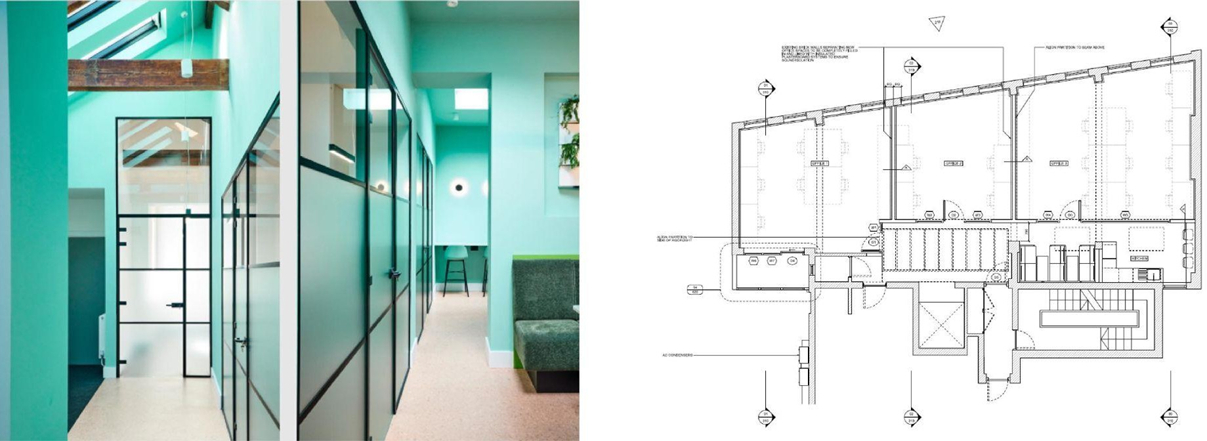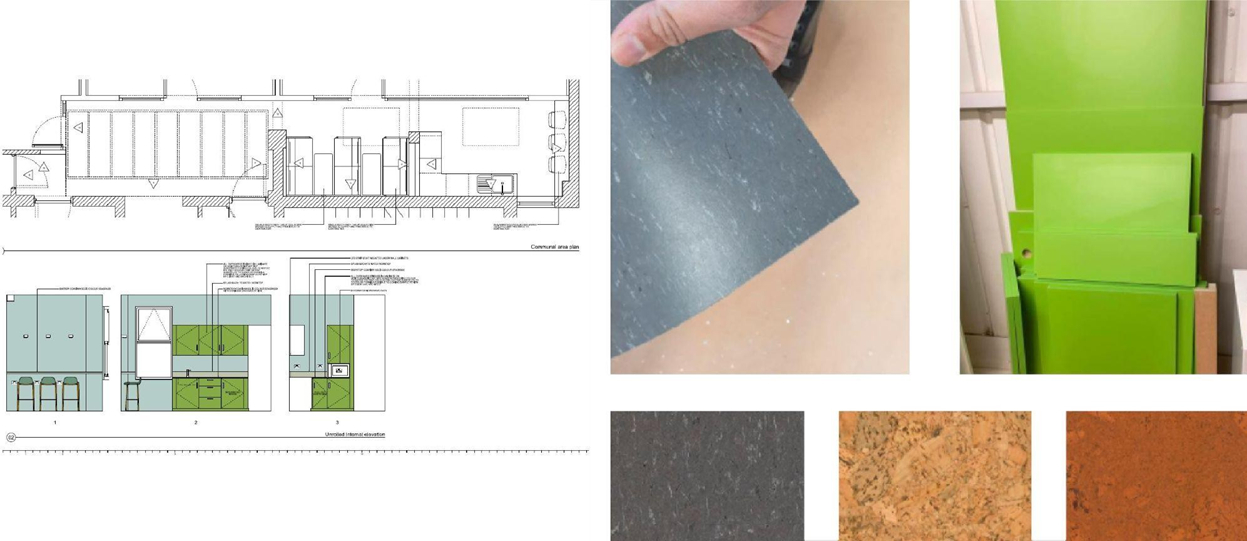Collective Works is an architectural firm based in London. They received a brief to renovate Summit House, a commercial office space, with the aim of increasing its desirability and rental income. The Collective Works team used BuildPartner as their ‘digital quantity surveyor’ to generate benchmark costs, create a detailed schedule, and collect comparable quotes. Here is an overview of how BuildPartner impacted the Summit House project, and their overall business, the headlines are:
● Created an additional revenue stream and increased practice income by about 5%
● Saved up to 8 hours per schedule created
● Enabled more freedom to pursue architectural creativity and deepen client relationships
When Khuzema Hussain, partner at Collective Works, and his team began using BuildPartner in2018, he expected it would save his firm a lot of time when it came to putting schedules together. But he was surprised to find that using the platform came with a host of unanticipated benefits as well. “The best way to illustrate BuildPartner’s impact on our business is by looking at our Summit
House project. It neatly reflects the various ways in which Collective Works has benefitted from BuildPartner: having cost information upfront, creating schedules faster, more creative freedom, and the ability to deepen relationships with clients,” Khuzema says.
1) Quick, Accurate Cost Planning
“With BuildPartner we can tell clients exactly how much ‘the best idea’ will cost, and it works. BuildPartner helps us sell these ideas to our clients.”
During the initial design phase, the discussion focused, in particular, on how to address the ceiling space. So the Collective Works team generated three ideas at three different price points:
● Option A, the high price: remove a suspended ceiling over the floorplan and take advantage of the vaulted structure of the roof
● Option B, the medium price: retain a flat ceiling
● Option C, the cost-saving option: leave the existing ceiling as is
It was obvious that Option A would be the most beautiful option. But, without concrete numbers, the client would have struggled to decide if a more expensive ceiling was worth the investment. So, using BuildPartner, the Collective Works team quickly generated precise estimates for each option so the client could compare them.
After that, the decision was simple. The client felt that it made sense to invest in the ceiling since their overall goal was to make the space more appealing to their prospective occupants. With the exact prices in hand, the client enthusiastically chose Option A.
Khuzema believes that being able to provide his clients with this kind of confidence, especially so early on in the project, enables him to be a better architect. “I can give them exactly what every client wants,” he says, “and that’s an understanding of how much their project will cost before it even begins.”

2) Quick, Accurate Scheduling
“The benefit isn’t just in how much time is saved, the quality of the schedules has also improved greatly.”
Putting a schedule together has always been a heavy lift for architects and designers. It’s a labour-intensive task that takes days to put together and, even with the best efforts, the accuracy of these documents is still variable.
This is exactly how Creative Works described their experience prior to working with BuildPartner’s scheduling platform. “It was just onerous,” says Khuzema. “It was this big, long list that took days to put together and then did nothing for us once the project was completed.”
BuildPartner provides users with a database of templates and tasks which users can select from. So Collective Works estimated that they saved at least 4-8 hours in creating the schedule for the Summit House project. This amount of time-saving has become standard for their team when they use BuildPartner. But the benefit is not just in how much time is saved, Khuzema says the quality of their schedules has also improved greatly.
Collective Works quickly realized that their ability to provide these precise estimates, and thus provide this deep confidence, was, in fact, a new line of service that they could also charge clients for. “Architects don’t usually have the confidence to produce an itemized cost plan but it's now possible with BuildPartner,” says Khuzema. “So you can now charge clients for part of the time spent on building that schedule.”


3) Increasing Client Confidence and Revenue
“If you credit BuildPartner for its ability to help us land work, it has a pretty substantial impact.”
Zooming out from the Summit House project and looking at Collective Works’ business more broadly, Khuzema says BuildPartner allowed his firm to increase its revenue by about 5%. This revenue increase happened in two ways. First, they were able to create an additional service, cost management, which now generates an additional stream of revenue. Second, they were able to dream big and design more creatively because they could put exact numbers to their unique ideas. In turn, bigger clients were more willing to choose Collective Works as their architecture firm.
With BuildPartner as part of their toolkit, Collective Works now has the accurate data they need to help sell their most creative ideas. “No one is after best quality at no cost,” Khuzema says,
4) Deepening Client Relationships
“When you look at it from the big picture, BuildPartner is not just saving us time, it’s also allowing us to do our core job better and more easily, while generating income. Now that’s a powerful tool.”
When it comes to spending money, nobody likes surprises. And yet, many homeowners are forced to start build projects knowing they have little control over how much it will ultimately cost. When architects use BuildPartner to generate precise project estimates, their clients feel confident and in control of their projects. This, in turn, allows for deeper, and better, client relationships.
Collective Works now uses BuildPartner on all of its projects. “This was a logical and important transition.” The firm’s mission is to design for the future in a beautiful and responsible way. This means working more sustainably, supporting diversity in the industry, and working collaboratively with new partners to positively impact their communities. BuildPartner has provided a stepping stone for the Collective Works team, which now has more time and more revenue, to continue to work towards their mission.
Give BuildPartner a try
Join the hundreds of other UK architects who are using BuildPartner to save time on schedules, empower their clients, increase their revenue, and more.


